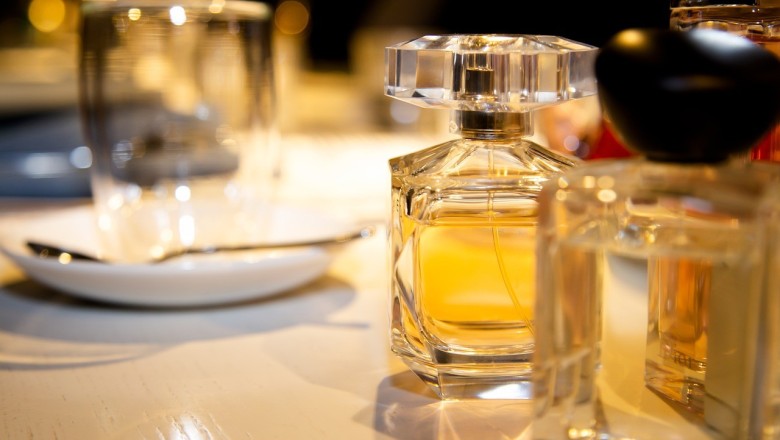The Role of Fragrance in History and Culture
Fragrances have played a significant role throughout human history, serving various purposes in different cultures. From the ancient Egyptians who used scents in religious ceremonies to the Romans who incorporated them into public baths, fragrances have been a symbol of status, a form of health practice, and a means of personal expression. In modern times, fragrances continue to be an integral part of daily life, often associated with personal identity and memory.
Understanding Fragrance Concentrations
The concentration of aromatic compounds in a fragrance determines its intensity, longevity, and price. The highest concentration is found in perfume (or parfum), making it the most potent and long-lasting form. Eau de parfum follows, with a slightly lower concentration but still providing a lasting scent. Eau de toilette offers a lighter fragrance suitable for everyday wear, and cologne, or eau de cologne, has the lowest concentration, making it a subtle and refreshing option often preferred for casual use.
The Composition of Fragrances
Fragrances are composed of three main components: top notes, middle notes, and base notes. Top notes are the initial, lighter scents that are perceived immediately upon application. Middle notes, or heart notes, emerge as the top notes dissipate and make up the main body of the scent. Base notes are the final, heavier scents that linger the longest and provide depth to the fragrance. These notes are blended to create a harmonious scent profile that evolves over time on the skin.
The Art of Perfumery
Perfumery is a craft that combines artistry and chemistry. Perfumers, also known as "noses," are skilled in identifying and combining a wide range of natural and synthetic ingredients to create unique and complex scents. The process involves careful selection and balancing of ingredients, as well as an understanding of how scents interact with individual skin chemistry.
Signature Scents and Personal Identity
A signature scent is a fragrance that an individual wears consistently, becoming part of their personal identity. It is chosen for its ability to resonate with the wearer's personality, style, and preferences. A signature scent can evoke memories and emotions, making it a powerful personal statement. Choosing a signature scent involves experimentation and an understanding of one's own taste and the message they wish to convey through scent.
The Sensory Experience of Fragrances
Fragrances have the power to evoke emotions and memories due to their direct connection to the limbic system, the part of the brain responsible for emotion and memory. The sensory experience of a fragrance can transport an individual to a different time or place, influence mood, and enhance well-being. This sensory journey is unique to each person, as the perception of scent is highly subjective and influenced by individual experiences and associations.
The Concentration of Scent: Perfume vs. Eau de Toilette vs. CologneUnderstanding Scent Concentration
The concentration of scent in a fragrance product is a measure of the percentage of pure perfume oils to alcohol and water. This concentration determines the intensity and longevity of the fragrance on the skin. Higher concentrations typically result in a more potent scent and longer-lasting effect, while lower concentrations are lighter and more subtle.
Perfume (Parfum)
Perfume, also known as parfum, has the highest concentration of fragrance oils, typically ranging from 20% to 30%. This high concentration makes it the most potent and enduring form of fragrance, with the ability to last up to 8 hours or more after application. Due to its strength, perfume is often applied sparingly to pulse points where the skin is warmer, allowing the fragrance to diffuse slowly.
Eau de Toilette
Eau de Toilette (EDT) is a lighter fragrance with a scent concentration between 5% to 15%. It is one of the most popular types of fragrances available due to its moderate intensity. Eau de Toilette is suitable for everyday wear and is often favored for daytime use. The scent of an EDT typically lasts for about 3 to 5 hours before it begins to fade.
Cologne (Eau de Cologne)
Cologne, or Eau de Cologne, has an even lower concentration of fragrance oils, usually between 2% to 4%. Originally intended for a masculine audience, cologne is now unisex and is appreciated for its fresh, light character. It is ideal for a subtle scent that is not overwhelming, making it perfect for casual or office environments. The longevity of cologne is relatively short, with the scent lasting approximately 2 hours.
Signature Scents and Concentration
A signature scent is a fragrance that an individual chooses to wear regularly, often becoming associated with their personal style or identity. The choice of concentration for a signature scent depends on personal preference, the occasion, and the desired impact of the fragrance. Some may prefer the lasting presence of a perfume, while others may opt for the understated elegance of an Eau de Toilette or the refreshing simplicity of a cologne.
Factors Influencing the Choice of Concentration
The choice between perfume, Eau de Toilette, and cologne often depends on factors such as the time of day, season, skin type, and personal scent tolerance. For instance, lighter concentrations like cologne are often favored in warmer climates or during the summer months, while higher concentrations like perfume are chosen for special occasions or cooler weather. Additionally, skin type can affect the way a fragrance develops and lasts; oily skin can hold a scent longer, possibly making a lighter concentration preferable.
The Role of Alcohol and Water
Alcohol and water are used as carriers for the fragrance oils, helping to dilute the oils and aid in the application of the fragrance. The higher the concentration of alcohol and water relative to the fragrance oils, the lighter the scent will be. Alcohol also causes the fragrance to evaporate faster, which can affect the initial intensity and dry-down of the scent on the skin.
Perfume: The Art of the Highest Scent ConcentrationUnderstanding Perfume Concentration
Perfume, often referred to as parfum or extrait de parfum, represents the highest concentration of scent oils in fragrance compositions. Typically, this concentration ranges from 20% to 40%, which not only makes the scent more intense but also ensures its longevity on the skin. The high concentration of aromatic compounds in perfume means that a single application can last anywhere from six to eight hours, and in some cases, even longer.
The Ingredients and Craftsmanship
The creation of perfume is a meticulous process that involves selecting the highest quality ingredients. Essential oils, absolutes, and aromatic chemicals are carefully blended to achieve a harmonious and complex scent profile. Master perfumers, also known as "noses," dedicate years to training their sense of smell and understanding the intricate interactions between different scent molecules. The craftsmanship behind a bottle of perfume is a testament to the artistry and expertise involved in its production.
The Role of Alcohol and Oil Bases
In perfume, the scent oils are dissolved in a base of ethanol, which acts as a carrier and helps to diffuse the fragrance when applied to the skin. Some perfumes may also incorporate an oil base, which can affect the way the fragrance interacts with the wearer's natural body chemistry. The choice of base can influence the perfume's sillage, or the degree to which the scent lingers in the air when worn.
Application and Wear
Due to its potency, perfume is typically applied sparingly to pulse points where the body's warmth can amplify the fragrance. Common application sites include the wrists, behind the ears, and the base of the throat. The concentrated nature of perfume means that it evolves and unfolds on the skin over time, revealing different facets of the scent as the hours pass.
The Personal Touch of Perfume
Perfume is often seen as a personal signature, a scent that can become closely associated with an individual's identity. The high concentration allows the fragrance to meld seamlessly with the wearer's skin, creating a unique and intimate olfactory experience. For many, the choice of perfume is a reflection of personality, mood, or the image they wish to project to the world.
The Luxury of Perfume
The exclusivity of perfume is not only due to its scent concentration but also its price point. The use of rare and precious ingredients, combined with the labor-intensive production process, often results in a luxury item that is coveted by fragrance aficionados. Perfume bottles are frequently designed to match the opulence of the liquid within, becoming decorative objects in their own right.
Seasonal and Occasional Use
While some perfumes are versatile enough to be worn year-round, others may be best suited to particular seasons or occasions. The richness and depth of a high-concentration perfume can be especially fitting for evening events or cooler weather, when its warmth and complexity can be fully appreciated. Conversely, lighter concentrations might be favored for daytime or warmer seasons.
Eau de Toilette: The Everyday Fragrance ChoiceUnderstanding Eau de Toilette
Eau de Toilette (EDT) is a type of perfume with a medium to low concentration of fragrance oils, typically ranging from 5% to 15%. This concentration results in a scent that is lighter than perfume or Eau de Parfum but stronger than Eau de Cologne or body sprays. Due to its balanced nature, Eau de Toilette is a versatile fragrance choice suitable for daily wear.
Composition and Longevity
The composition of an Eau de Toilette is designed to provide a pleasant and noticeable scent without being overwhelming. It usually consists of top, middle, and base notes that unfold over time. The top notes are the initial, lighter scents that are perceived immediately upon application. Middle notes, or heart notes, emerge as the top notes dissipate and make up the main body of the fragrance. Base notes are the deeper, richer scents that linger the longest.
In terms of longevity, Eau de Toilette typically lasts for a few hours, making it ideal for daytime wear or work environments. Its staying power is enough to sustain a subtle fragrance throughout the day without the need for frequent reapplication.
The Practical Choice for Everyday Use
Eau de Toilette's moderate scent concentration makes it a practical choice for everyday use. It is less intense and typically less expensive than more concentrated fragrance options, which means it can be used more liberally without being overpowering or cost-prohibitive. This balance of affordability and subtlety makes EDT a popular choice for regular, casual use.
Versatility in Fragrance Profiles
Eau de Toilette fragrances come in a wide variety of scent profiles, from fresh and zesty citrus aromas to soft floral bouquets and deep woody or spicy notes. This diversity allows individuals to choose a scent that best matches their personal style and the occasion. Whether it's a refreshing scent for a day at the office or a warm, inviting aroma for a lunch date, there's an Eau de Toilette to suit the mood.
Application Tips for Optimal Scent Experience
To get the most out of an Eau de Toilette, it should be applied to pulse points such as the wrists, neck, and behind the ears. These areas emit heat, which helps to diffuse and amplify the fragrance. Since EDT is not as long-lasting as more concentrated perfumes, it can be reapplied lightly throughout the day if desired.
Ideal for Layering Scents
Eau de Toilette is also well-suited for layering with other scented body products. Starting with a scented body wash or lotion and then applying an Eau de Toilette can help to build a more complex scent profile and enhance the overall longevity of the fragrance on the skin.
Accessibility and Popularity
Eau de Toilette is widely available and can be found in most department stores, perfume shops, and online retailers. Its popularity stems from its approachability and ease of wear, making it a staple in many fragrance collections. With a broad range of options catering to different preferences and budgets, Eau de Toilette continues to be a go-to choice for those seeking an everyday fragrance.
Cologne: A Light Scent for a Subtle TouchOrigins and Composition
Cologne, originally named after the city of Cologne in Germany, is a type of fragrance that is lighter than its counterparts like perfume and eau de toilette. It typically contains a lower concentration of fragrance oils, usually between 2% to 4%. This lower concentration makes cologne a more subtle choice, suitable for those who prefer a light, fresh scent that doesn't overpower.
Ideal Usage and Audience
Cologne is often marketed towards men, but it's a unisex option that can be enjoyed by anyone. Its lightness makes it ideal for daytime wear, casual events, or in professional settings where a strong fragrance might not be appropriate. It's also a good choice for those who are new to wearing fragrances or for individuals with sensitivities to stronger scents.
Scent Profile and Longevity
The scent profile of cologne is typically characterized by a fresh, clean aroma with citrus or herbal notes. These lighter notes are the first to be noticed upon application but also the first to fade. Due to its lower concentration of oils, cologne does not have the same longevity as more concentrated fragrances. It usually lasts for about 2 to 4 hours, which means it may need to be reapplied throughout the day to maintain its presence.
Application Tips
To get the most out of cologne, it should be applied to pulse points such as the wrists, neck, and behind the ears. These areas of the body generate heat, which helps to diffuse the fragrance throughout the day. Since cologne is a lighter scent, it can be applied more liberally than stronger fragrances. However, it's important to remember that the goal is to achieve a subtle touch of scent, so it's best to start with a small amount and add more if needed.
The Role in Fragrance Wardrobes
For many, cologne serves as a versatile addition to their fragrance wardrobe. It's often chosen for daily wear, leaving stronger scents for special occasions or evenings out. Cologne can also be a refreshing option for post-gym use or a quick freshen-up during a busy day. Its light and unobtrusive nature makes it a go-to for those who want to wear a fragrance without making a bold statement.
Signature Scents: Crafting a Personal Aroma IdentityUnderstanding Signature Scents
A signature scent is a fragrance that an individual consistently wears, becoming a part of their personal style and identity. It's a scent that others associate with that person, often evoking memories or feelings when detected. Crafting a signature scent is about finding a fragrance that resonates with one's personality, lifestyle, and preferences.
The Journey to Discovering Your Signature Scent
The process of finding a signature scent is deeply personal and can involve a journey of exploration. It begins with understanding one's preferences in fragrance notes, which can range from floral to woody, citrus to spicy. Sampling various scents and observing how they interact with one's body chemistry is crucial, as a fragrance can change throughout the day.
Considerations for Choosing a Signature Scent
When selecting a signature scent, it's important to consider the context in which it will be worn. A scent that is suitable for everyday wear may differ from one that is reserved for special occasions. The season can also influence the choice, as certain fragrances may be more appropriate for summer or winter. Longevity and sillage, the scent's staying power and the trail it leaves, are also key factors.
The Role of Concentration Levels
The concentration of a fragrance affects its intensity and longevity, which in turn can influence its suitability as a signature scent. Perfumes, with the highest concentration, offer a strong and long-lasting aroma, while eau de toilettes are lighter and may require reapplication. The choice between these concentrations depends on personal preference and the desired impact of the scent.
Personalizing Your Fragrance
For those seeking a truly unique signature scent, custom fragrance creation is an option. This involves working with a perfumer to blend individual notes that perfectly capture one's essence. Personalization can also be achieved by layering different fragrances to create a complex and distinctive aroma.
Evolving with Your Signature Scent
A signature scent does not have to be a lifelong commitment. As individuals grow and their tastes change, so too can their fragrance. It's natural for a signature scent to evolve over time, reflecting the journey and development of the person wearing it. Embracing change can lead to the discovery of new fragrances that resonate with one's evolving identity.
The Role of Ingredients and Notes in Different Fragrance TypesUnderstanding Fragrance Composition
Fragrance composition is a complex art that involves blending various ingredients to create a harmonious scent. The composition is typically divided into three parts: top notes, middle notes (also known as heart notes), and base notes. Top notes are the initial, lighter smells that are perceived immediately upon application of the perfume. Middle notes become apparent shortly after the top notes dissipate and make up the main body of the scent. Base notes are the deeper, richer scents that linger the longest.
Ingredients in Perfume
Perfume, also known as parfum, has the highest concentration of fragrance oils, typically ranging from 20% to 30%. This high concentration means that the ingredients chosen for a perfume are critical, as they will be more pronounced and last longer on the skin. Perfumes often use rare and precious natural ingredients like jasmine, rose oil, or oud, which contribute to their depth and complexity. The base notes in perfumes are particularly significant, as they give the scent its lasting power.
Ingredients in Cologne
Cologne, or Eau de Cologne, has a much lower concentration of fragrance oils, usually around 2% to 4%. Originally, cologne referred to a light, fresh blend with a citrus-based scent composed of lemon, orange, bergamot, and other citrus oils. Nowadays, the term is more associated with men's fragrances and can include a variety of ingredients. Due to the lower concentration, colognes tend to have a simpler composition, with fewer base notes and a focus on the freshness of top notes.
Ingredients in Eau De Toilette
Eau de Toilette (EDT) strikes a balance between perfume and cologne, with fragrance oil concentrations typically between 5% to 15%. EDTs are designed for a lighter wear, which makes them suitable for everyday use. The ingredients in an EDT are chosen to ensure a noticeable yet not overpowering scent. Middle notes are particularly important in EDTs, as they provide the main character of the fragrance while not being as heavy as those in perfumes.
Signature Scents and Their Ingredients
A signature scent is a fragrance that an individual adopts as their own, often wearing it exclusively to create a personal association. The ingredients in a signature scent are chosen to match the wearer's personality, style, and preferences. Signature scents can be found across all types of fragrances, from perfumes to colognes. The key is in the unique combination of notes that resonate with the wearer on a personal level.
The Impact of Ingredients on Fragrance Longevity and Sillage
The ingredients used in a fragrance not only define its scent profile but also affect its longevity and sillage (the scent trail left in the air when someone walks by). Perfumes, with their higher concentration of oils and richer ingredients, typically have greater longevity and sillage. Colognes, with their lighter and more volatile ingredients, tend to dissipate more quickly and have a subtler sillage. Eau de Toilette offers a moderate longevity and sillage, making it versatile for various occasions.
Natural vs. Synthetic Ingredients
Fragrances can be made from natural ingredients, synthetic analogs, or a combination of both. Natural ingredients are derived from plants, flowers, and sometimes animal products, while synthetic ingredients are created in a laboratory. The choice between natural and synthetic ingredients can affect the fragrance's character, performance, and allergenic potential. For instance, synthetic ingredients can provide consistency and longevity that some natural ingredients cannot, while natural ingredients can offer a complexity and depth that is difficult to replicate synthetically.
Understanding Your Preferences
Before stepping into a store or browsing online, take a moment to consider what types of scents you are naturally drawn to. Are you enamored by the freshness of citrus, the warmth of vanilla, or the earthiness of sandalwood? Recognizing your preference for certain scent families—floral, oriental, woody, or fresh—can serve as a guiding compass in your search for the perfect fragrance.
Reflect on Past Favorites
Think about perfumes or colognes you've enjoyed in the past. What did they have in common? Identifying patterns in your previous choices can help you pinpoint new fragrances that align with your taste.
Consider Natural Affinities
Your body chemistry plays a crucial role in how a fragrance smells on your skin. Pay attention to scents that harmonize well with your natural odor and those that do not. This understanding can help you select a fragrance that will blend seamlessly with your body's unique chemistry.
Sampling and Testing
The true essence of a fragrance can only be experienced when it's worn on your skin. Testing and sampling are vital steps in the selection process.
Apply on Skin, Not Paper
Spritz the fragrance on your pulse points, such as your wrists or neck, and allow it to settle for a few minutes. This will give you a more accurate representation of how the scent interacts with your skin's oils and your natural scent.
Live With the Scent
Wear the fragrance for several hours to experience its full evolution, from the initial top notes to the deeper base notes. This will also reveal the scent's longevity and sillage, or its ability to linger in the air.
Avoid Overwhelming Your Senses
When testing multiple fragrances, cleanse your palate with something neutral, like coffee beans, between scents. This will prevent olfactory fatigue and ensure that each fragrance gets a fair assessment.
Context and Occasion
The context in which you plan to wear the fragrance can greatly influence your choice. A scent that's perfect for a romantic evening might not be suitable for the office.
Daytime vs. Nighttime
Lighter, fresher scents are typically more appropriate for daytime wear, while richer, more complex fragrances may be better suited for the evening.
Seasonal Scents
Consider the seasons when selecting a fragrance. Lighter, aquatic, and citrus-based scents are refreshing in the summer, while spicy, woody, or oriental fragrances can provide warmth in the winter.
Purpose and Impression
Think about the message you want to convey with your scent. Do you want something that exudes confidence for professional settings, or are you looking for a scent that's playful and inviting for social gatherings?
Personalization and Uniqueness
Finding a fragrance that feels uniquely 'you' can be a rewarding journey. A signature scent can become a part of your identity, leaving a memorable impression on those you meet.
Explore Niche Brands
Beyond mainstream designers, niche fragrance houses often offer unique and distinctive scents that can set you apart from the crowd.
Customization Options
Some brands offer personalized fragrances, allowing you to create a custom blend that perfectly captures your essence.
Trust Your Instincts
Ultimately, the right fragrance for you is one that you love and feel comfortable wearing. Trust your instincts and choose a scent that makes you feel confident and true to yourself.
































